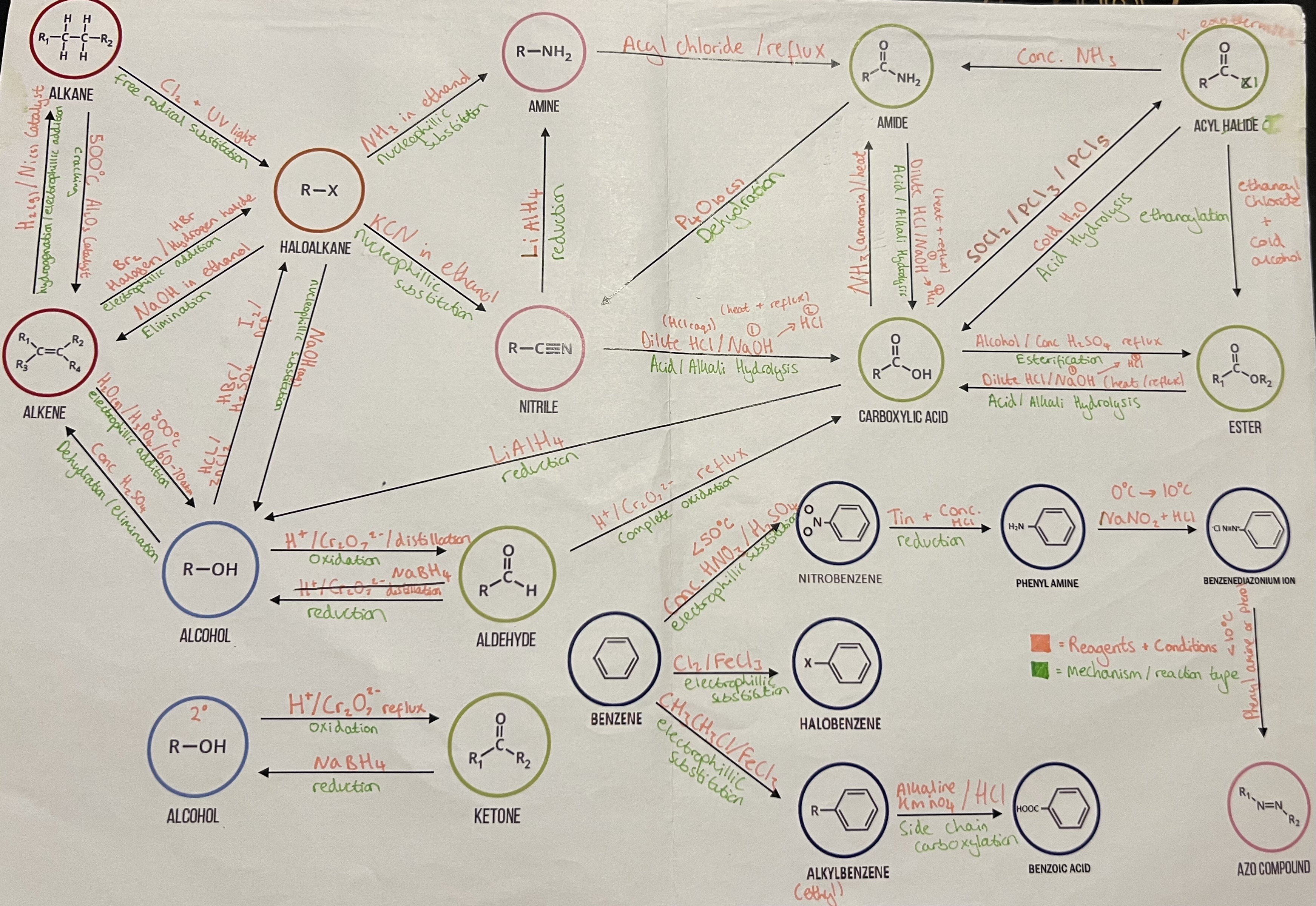A2 Unit 4.4,4.6 & 4.7 Aldehydes, Ketones, Amines, Amino Acids, Perides and Proteins
1/29
There's no tags or description
Looks like no tags are added yet.
Name | Mastery | Learn | Test | Matching | Spaced |
|---|
No study sessions yet.
30 Terms
Aldehydes and Ketones
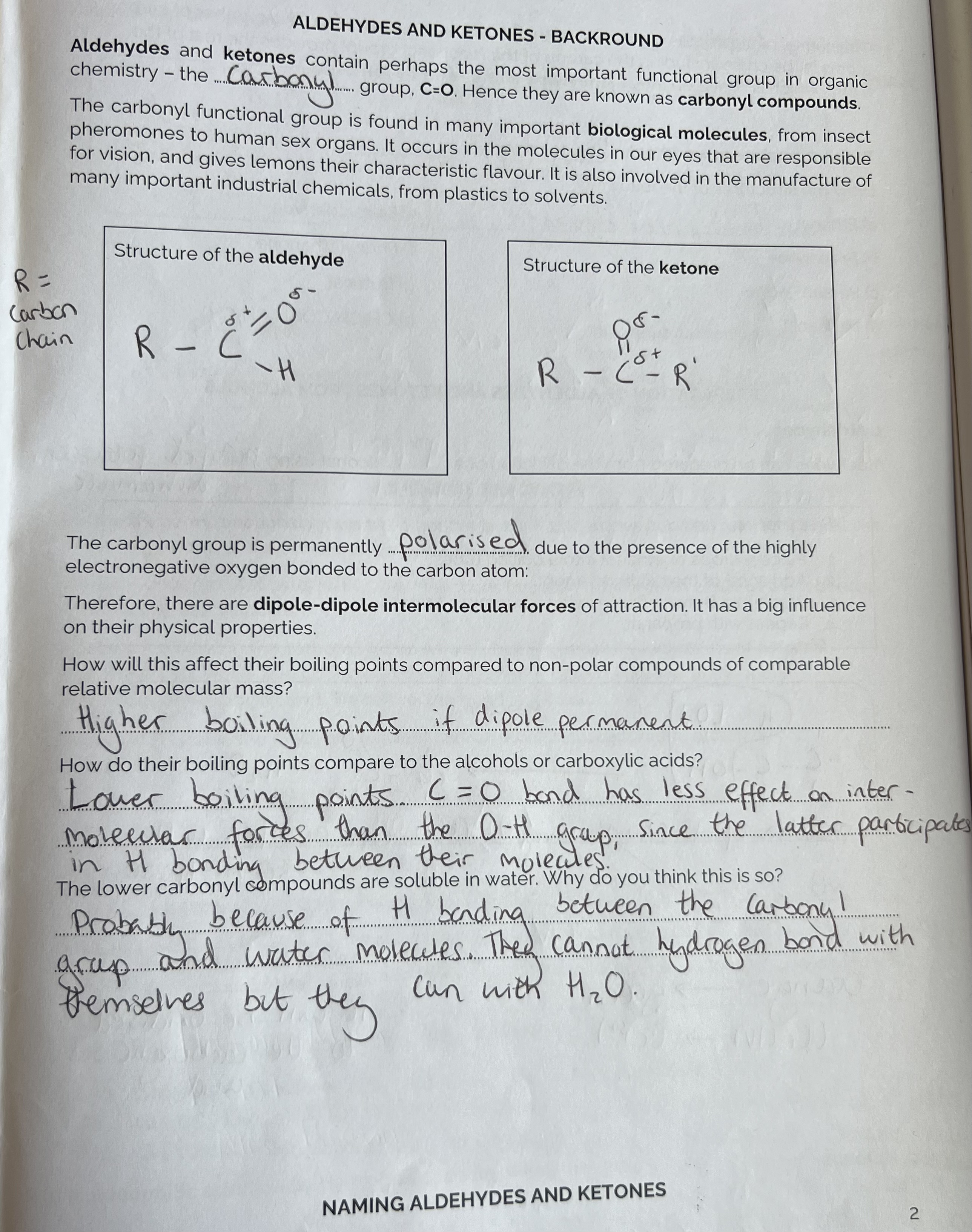
PREPARATION OF ALDEHYDES FROM ALCHOLS

PREPARATION OF KETONES FROM ALCOHOLS
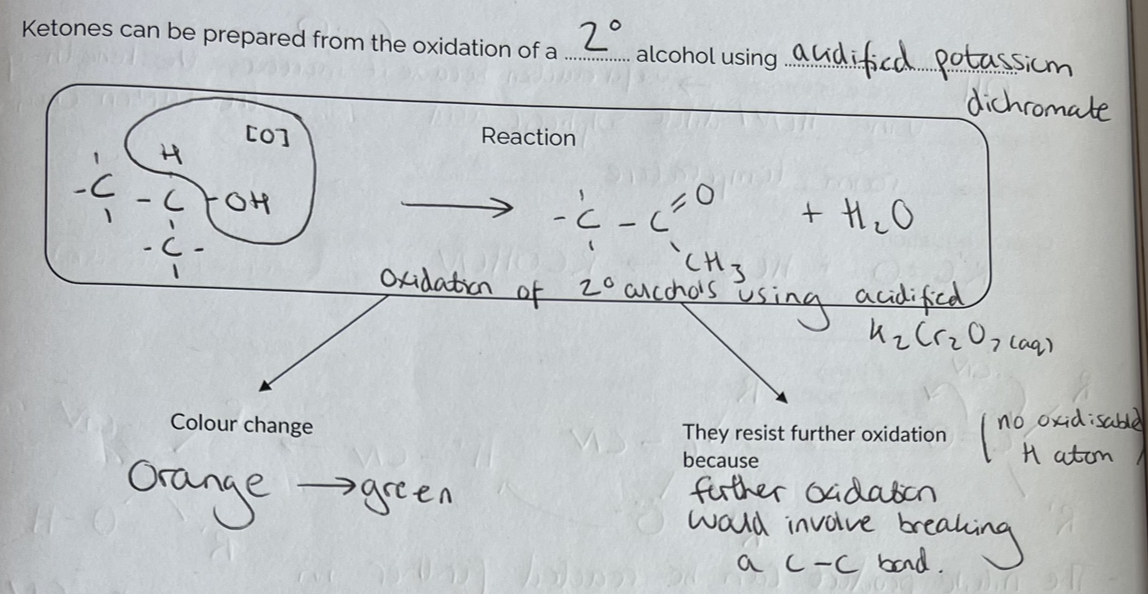
Chemical Reactivity
As the carbonyl functional group has a double bond, it undergoes addition reactions - just like the double bond of the functional group in alkenes.
Alkenes undergo electrophillid addition reactions because the electron cloud of the Tt bond is attacked by electrophiles.
There is a Tt bond in the carbonyl group as well, but it is between two atoms of different electronegativities, C and O. The density of the charge cloud is greater at the more electronegative oxygen end.
Therefore, the bond is Polar Since C=O is polar, the electron deficient carbon atom is susceptible to attack by nucleophiles. Their reactions are nucleophilic addition reactions.
Why don’t substitution reactions occur and are aldehydes more reactive than ketones?

Addition Reaction & Questions
(Practice questions on pg. 6)
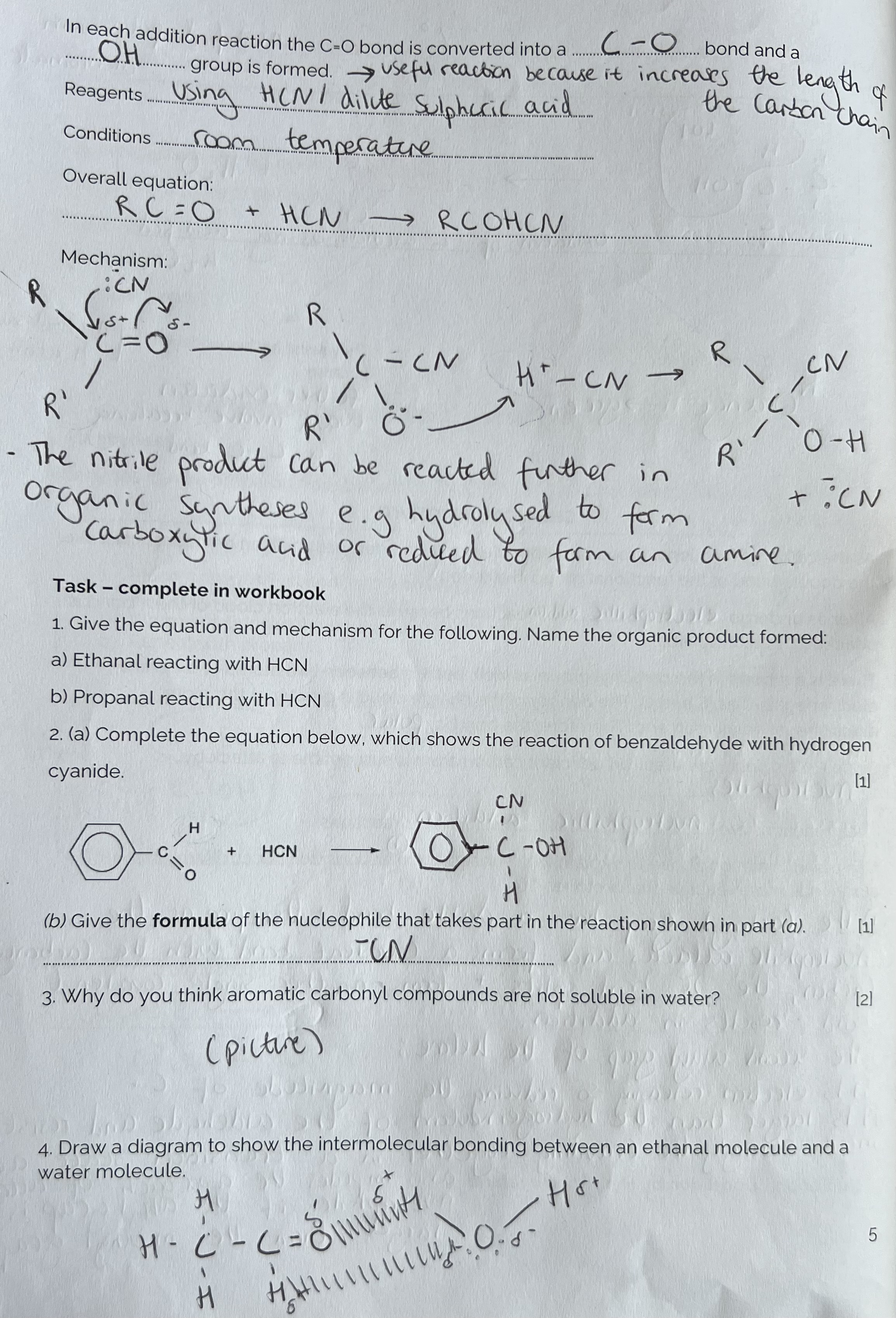
Why aren’t aromatic carbonyl compounds soluble in water?
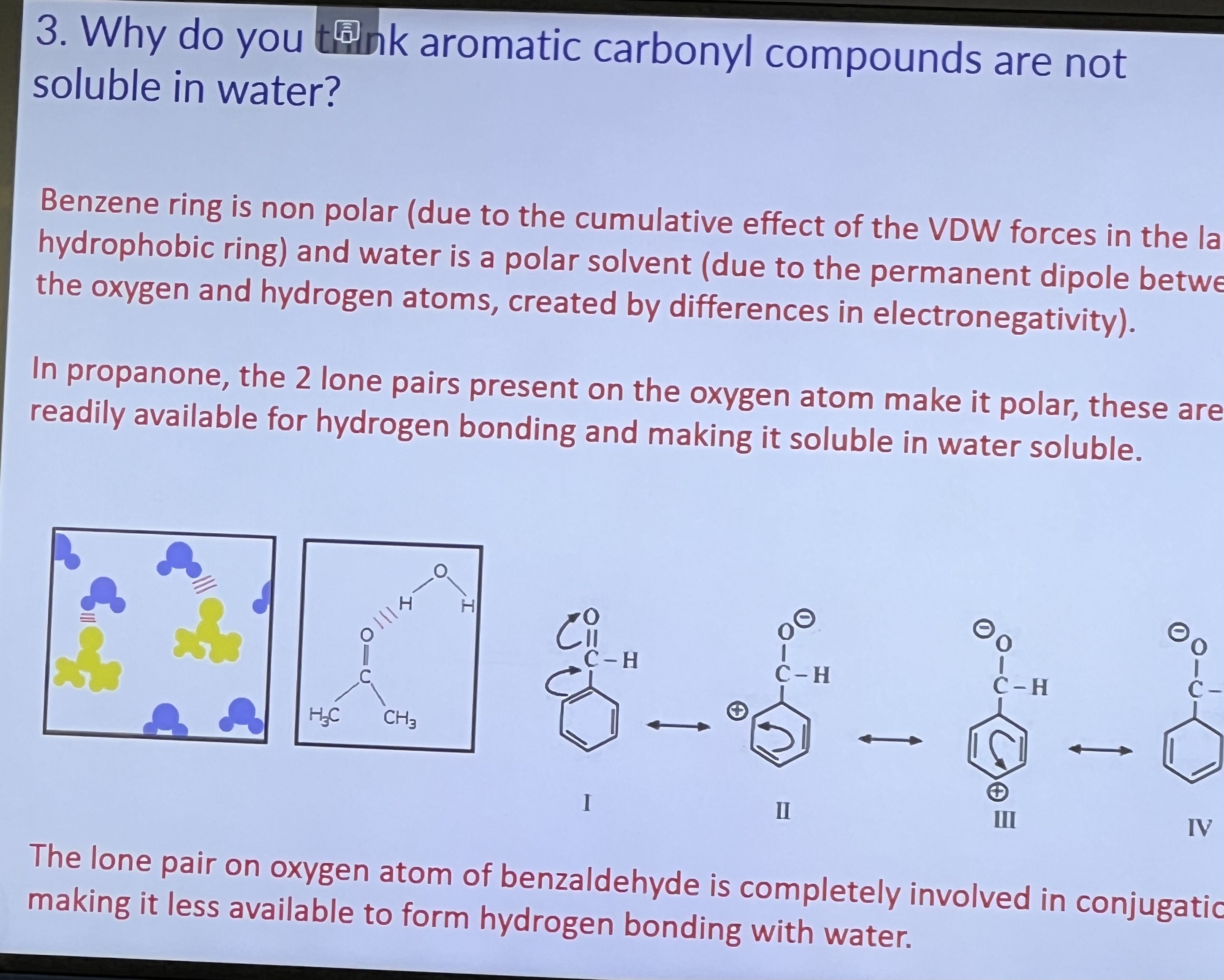
Reaction of Aldehydes and Ketones with 2,4-dinitrophenyl hydrazine (Brady’s Reagent)

Nucleophilic Addition/ Elimination Reaction & Specified Prac.

Risk Assessment & Reactions of Aldehydes and Ketones
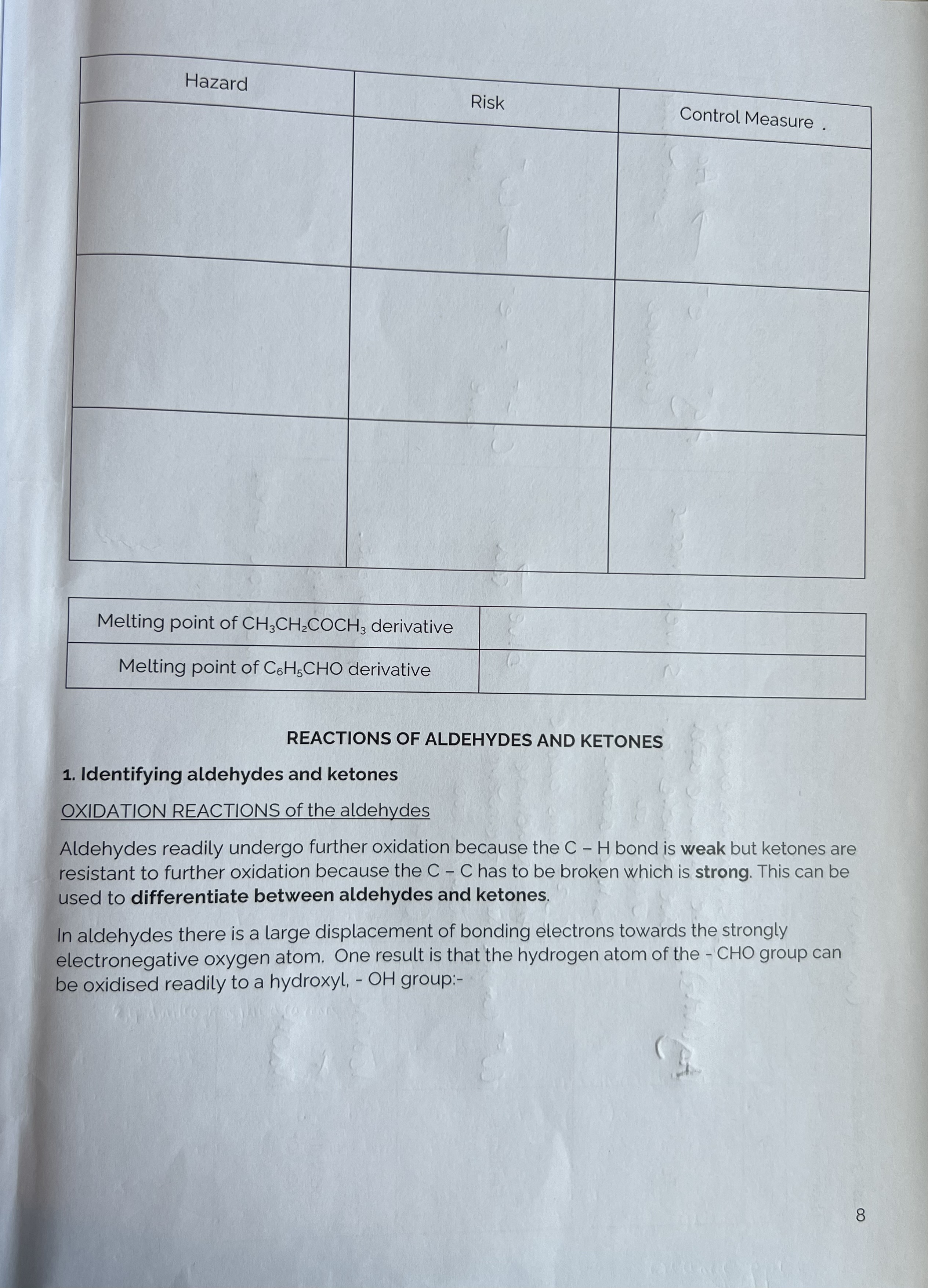
Chemical Tests
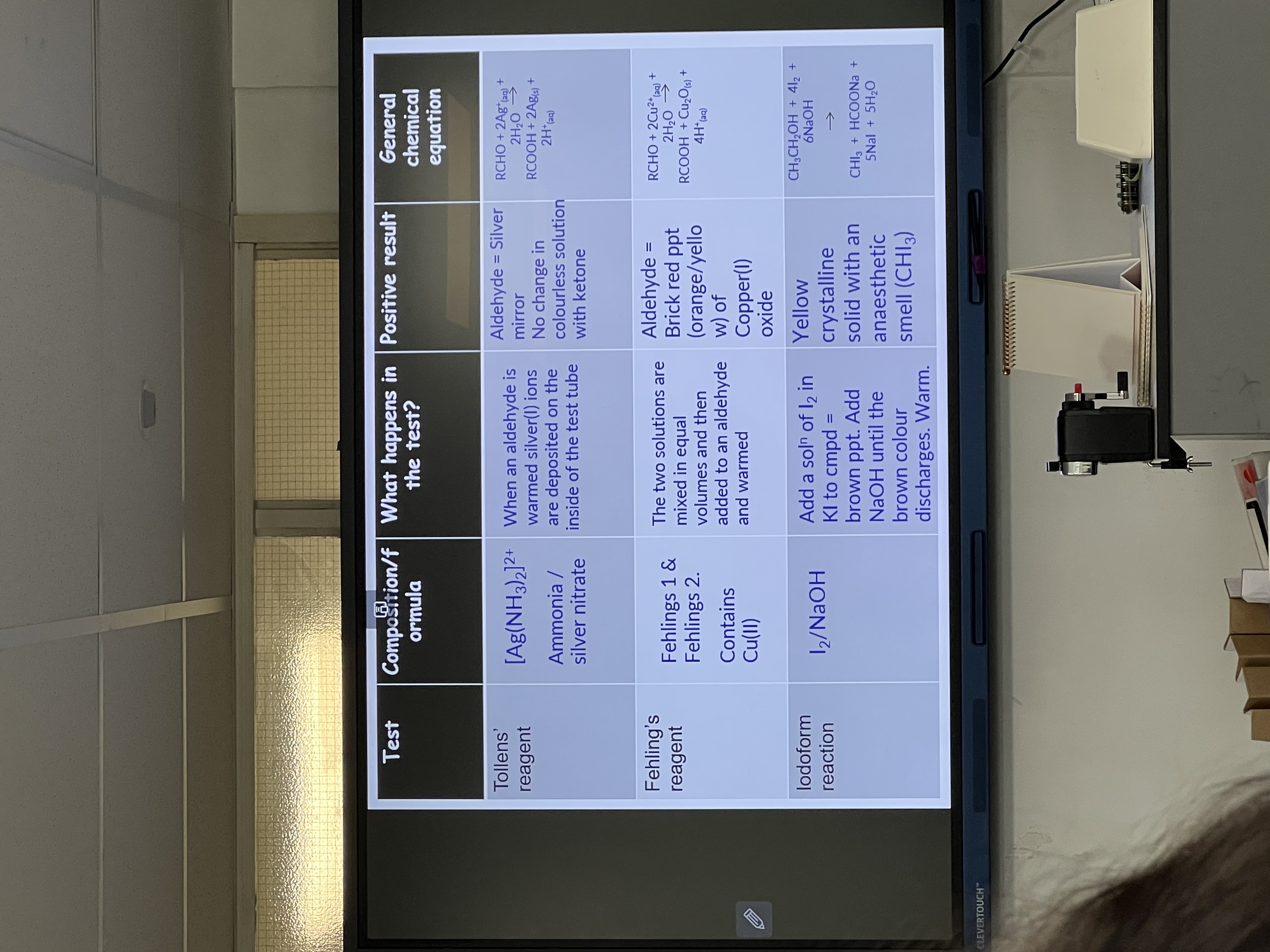
Reduction Reactions of Aldehydes and Ketones with NaBH4
The mechanism is similar to that of the addition of hydrogen cyanide, only in this case the nucleophile is ..... once the NaBH4 has reacted with the carbonyl compound, water is added to provide the protons.
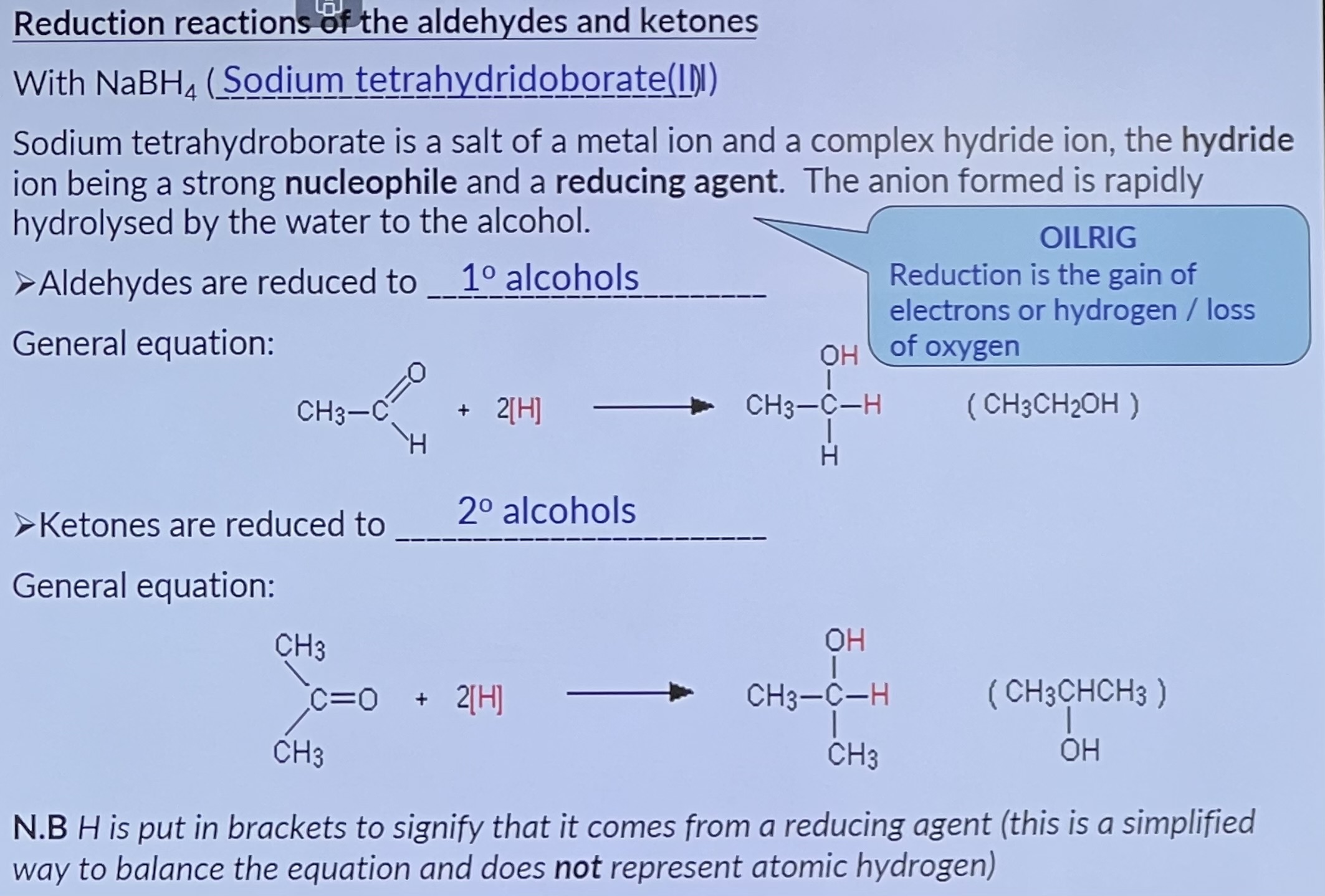
Reactions of the Carbonyl Group with Brady’s Reagent & Practical Methods
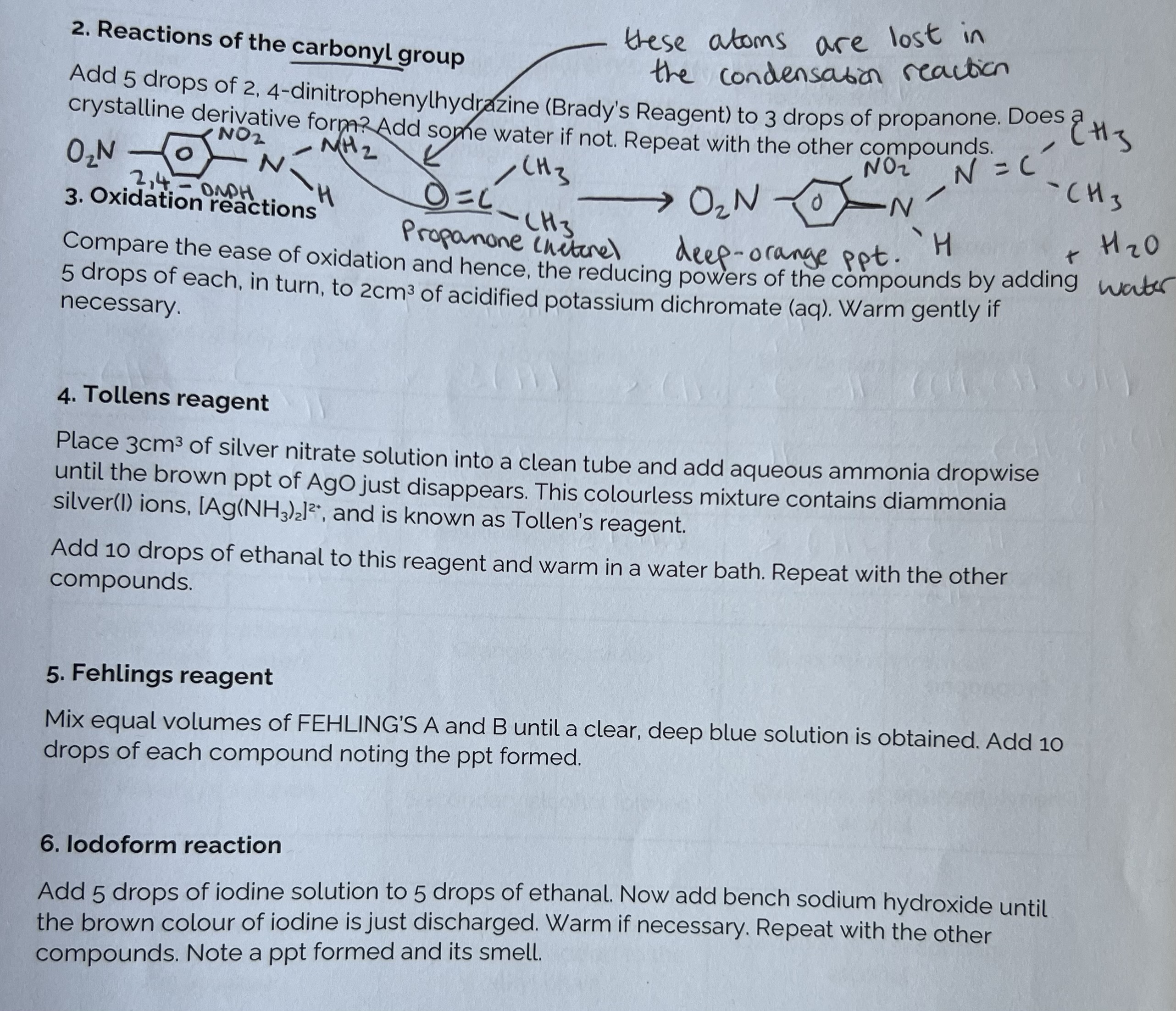
Primary Amines
Amines can be considered as compounds formed from ammonia by substituting hydrogen atoms with alkyl or aryl groups.
If one of the hydrogen atoms in NH3 is substituted, we get a compound of the form RNH2 called a primary amine.
Such compounds are named using the suffix -ylamine after a stem indicating the number of carbon atoms in the molecule.
Thus CH3NH2 is methyl amine.
Substitution of two of the hydrogens of NH3 gives compounds of the form R1R2NH, called secondary amines, named in a similar way to primary amines. Thus, (CH3)2NH is dimethylamine.
The prefix amino- can be used to indicate the presence of an -NH2 group in molecules containing more than one functional group, e.g. aminoethanoic acid.
Naming Compounds
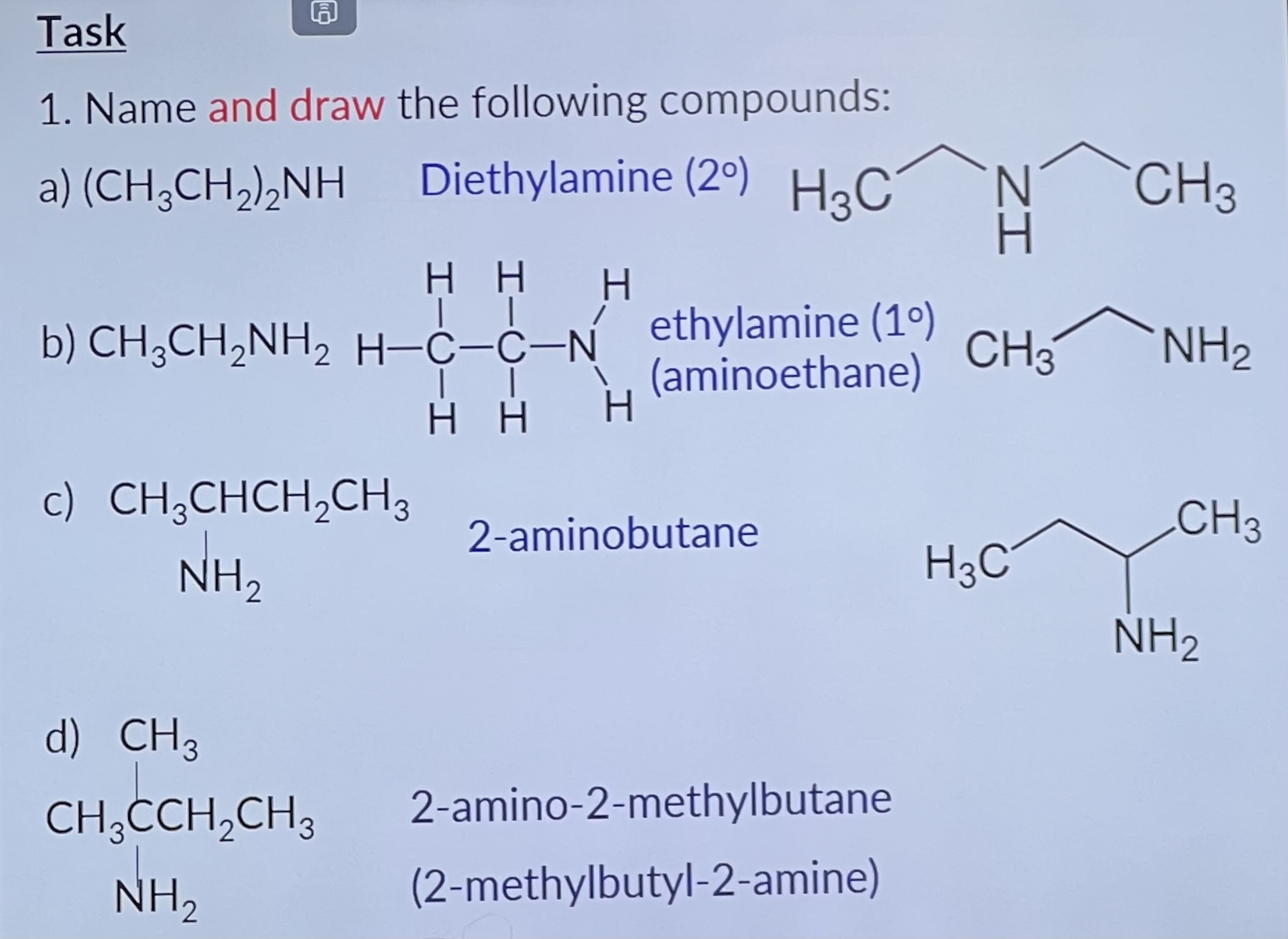
Why is aminomethane (methylamine) a stronger base than ammonia?
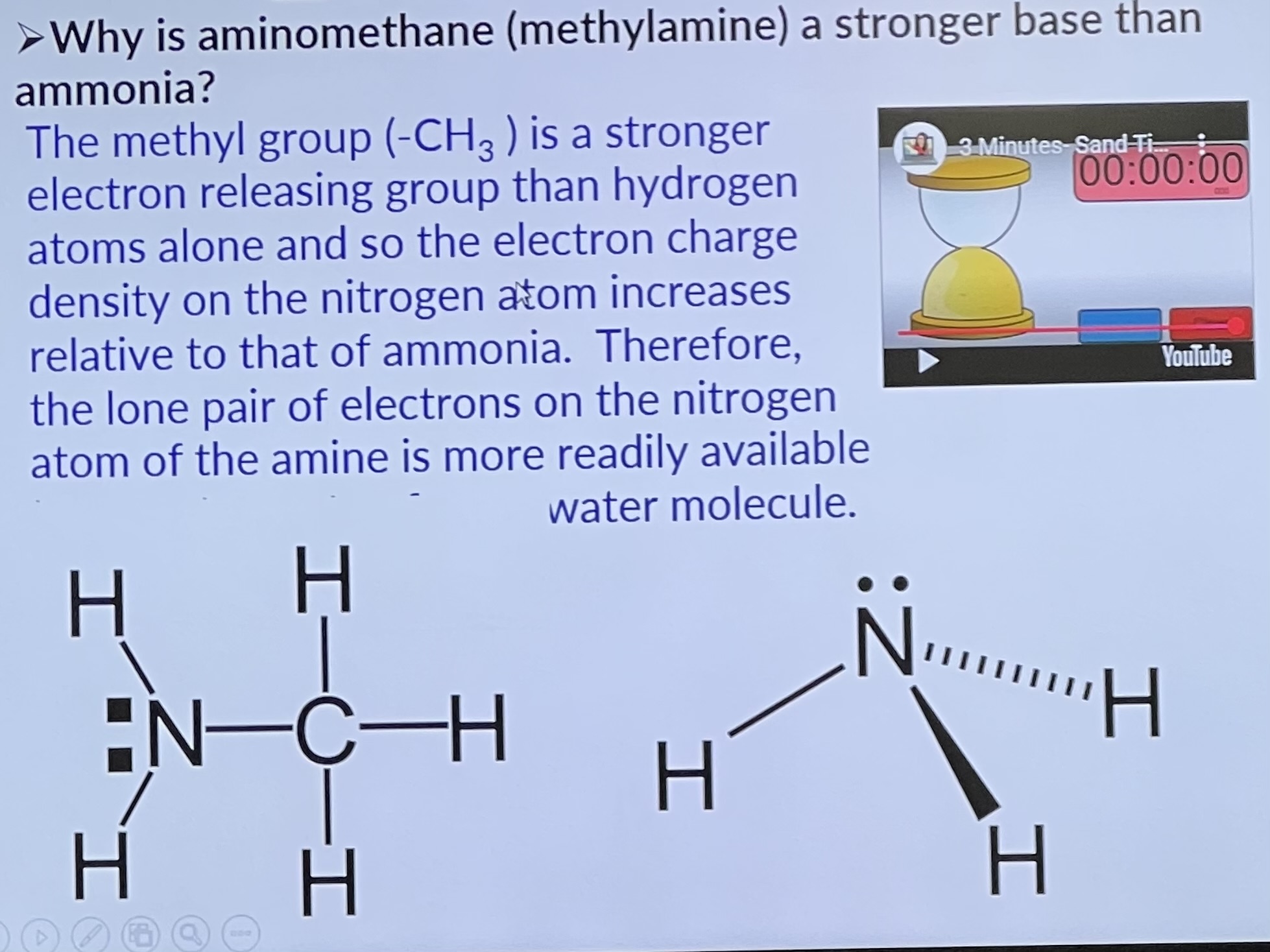
Why is aminobenzene (phenylamine) a weaker base than ammonia?
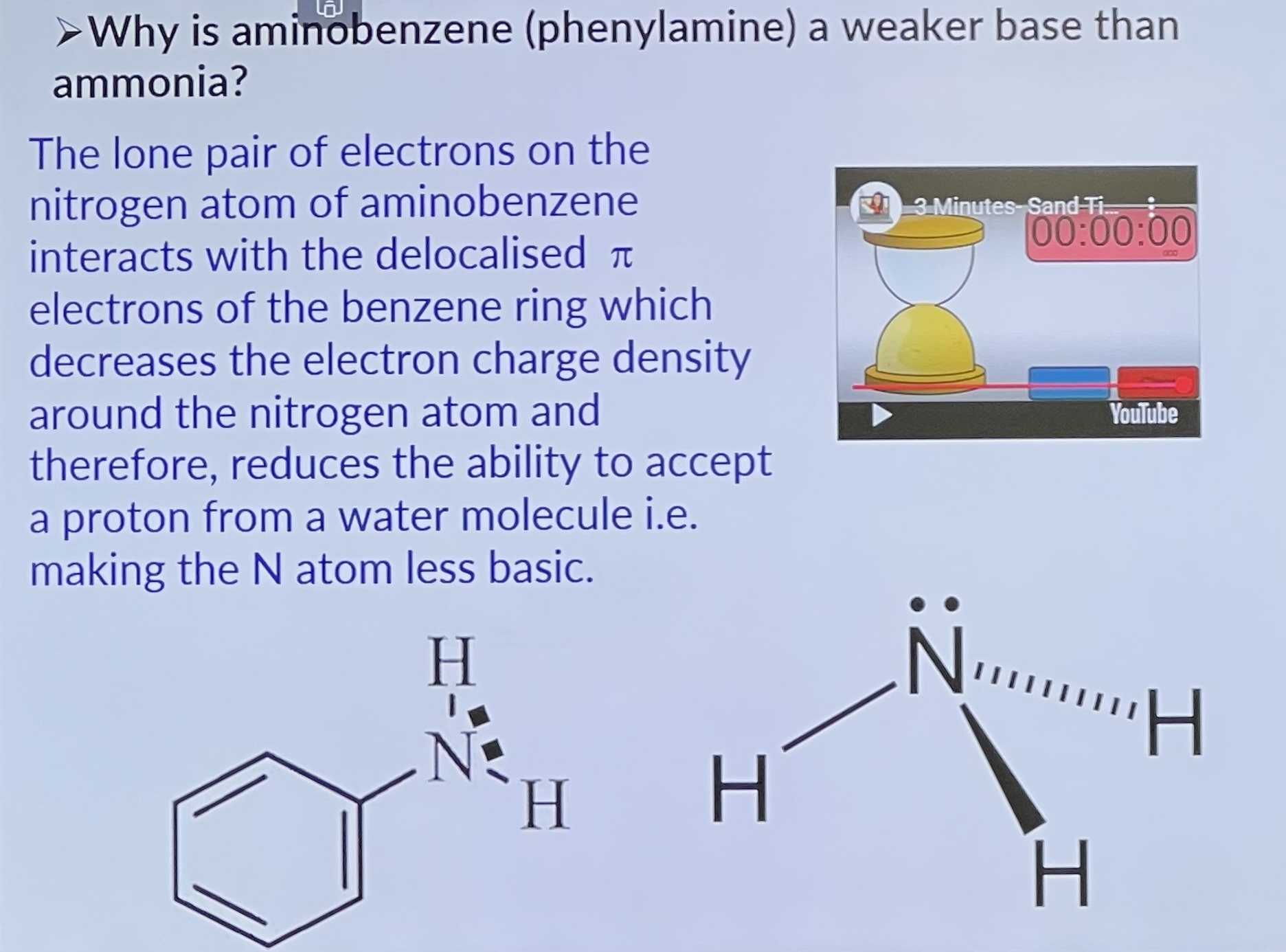
Physical Properties of Aliphatic Amines
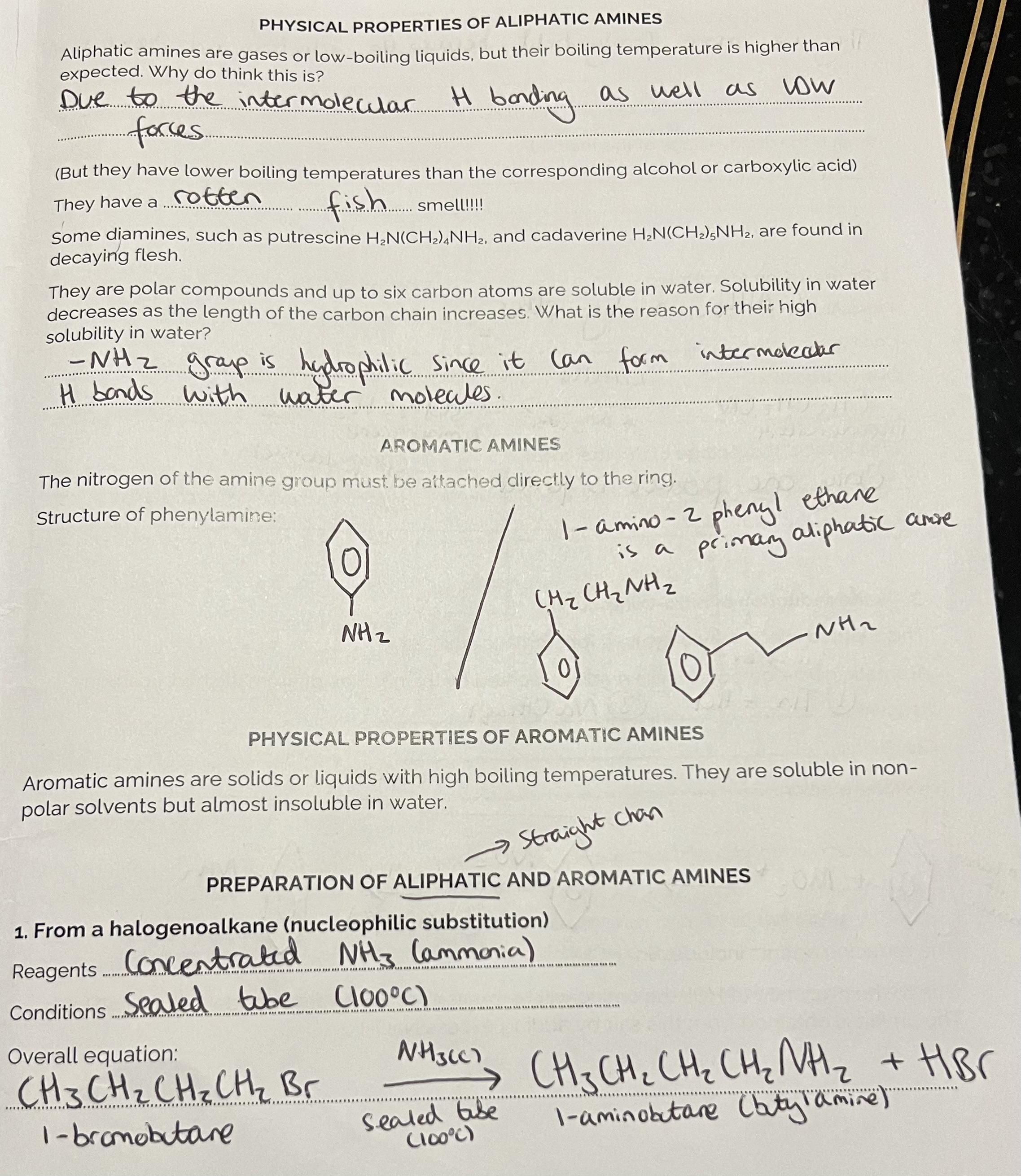
Disadvantage of this method

Reduction of a nitrile & nitro-compounds
Use concentrated HCL
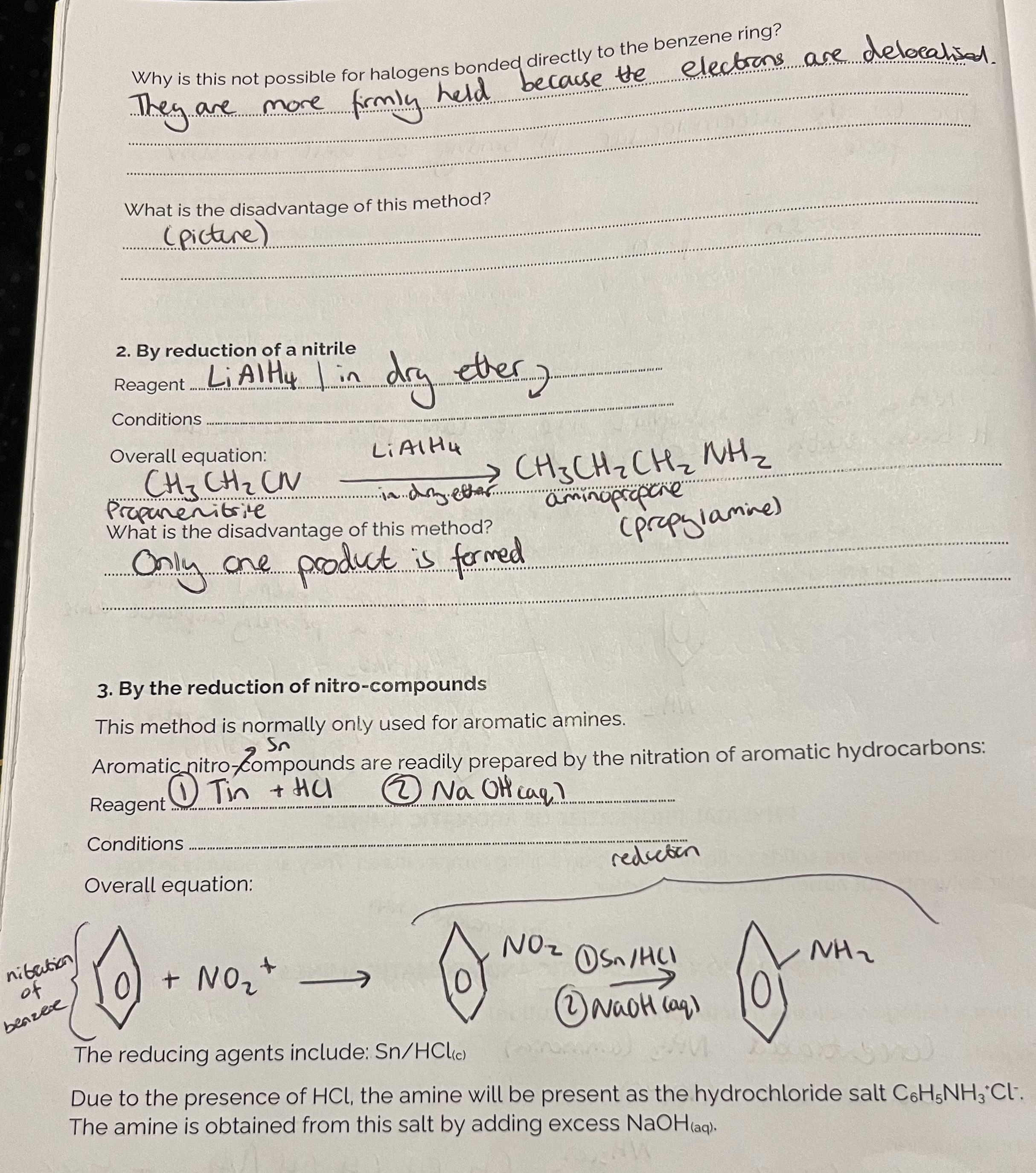
Chemical Properties of Amines

Summary
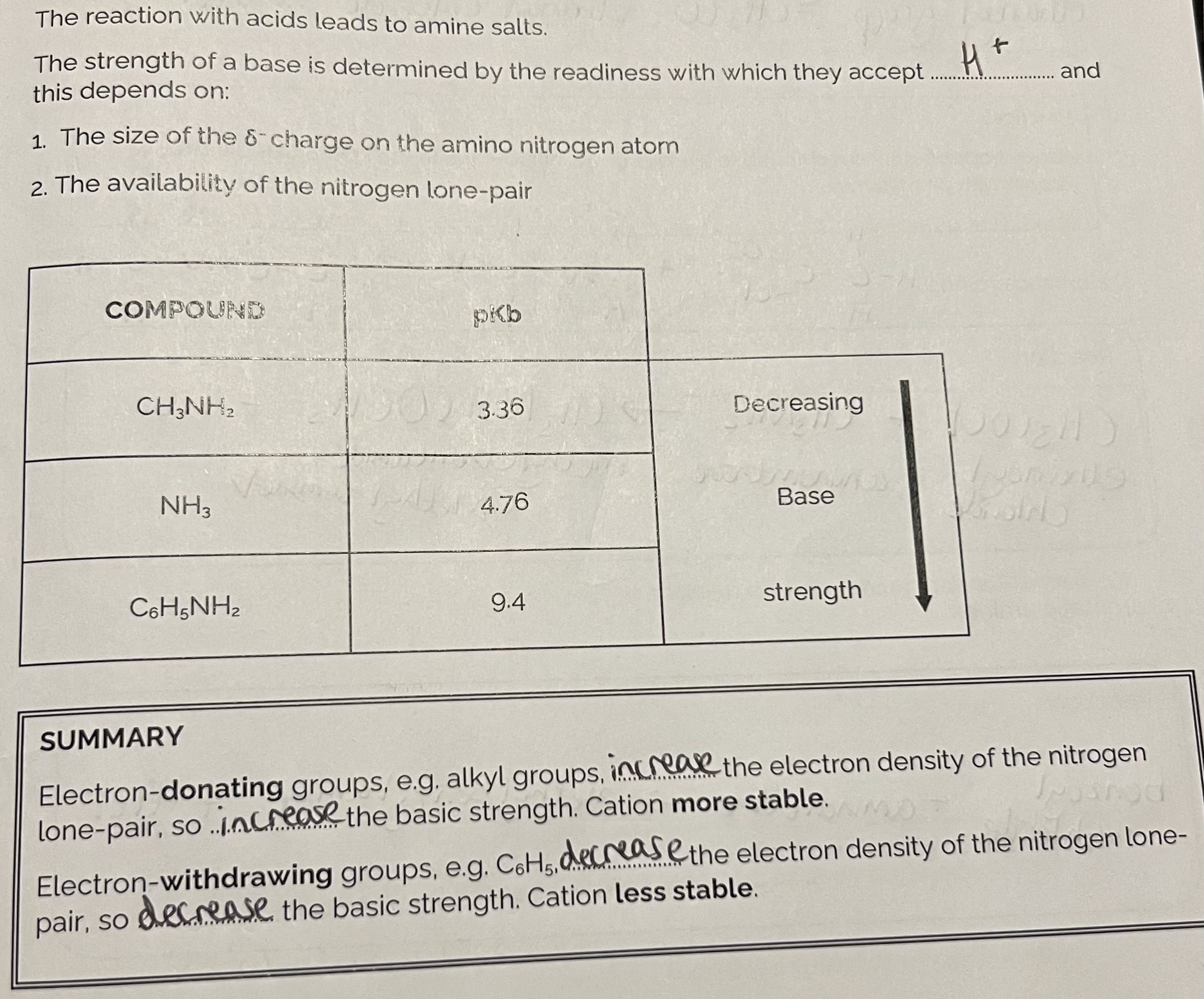
Reactions of Primary Amines
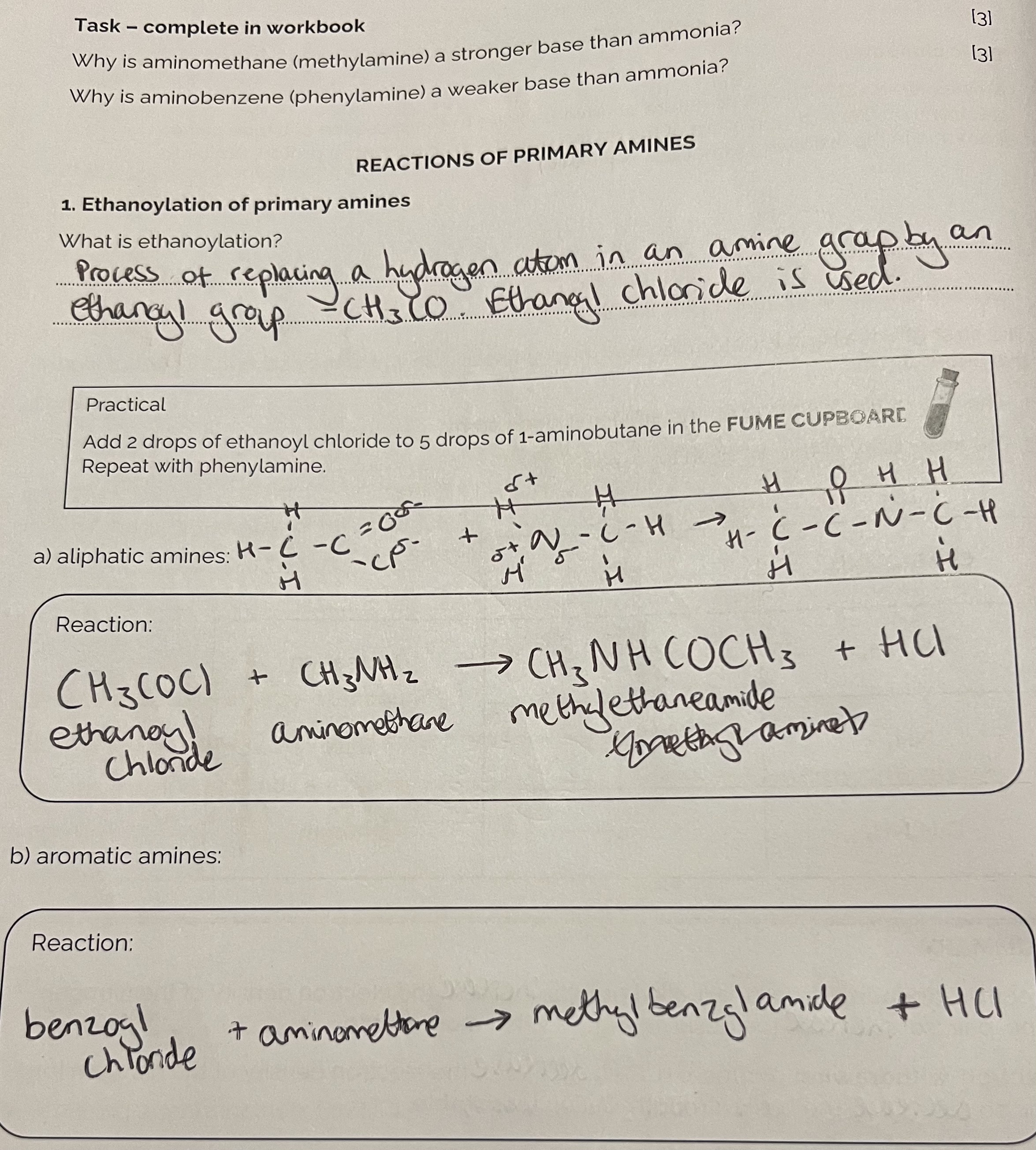
Example Question

Reactions with nitric acid

Reaction of 1-aminobutane - Aliphatic
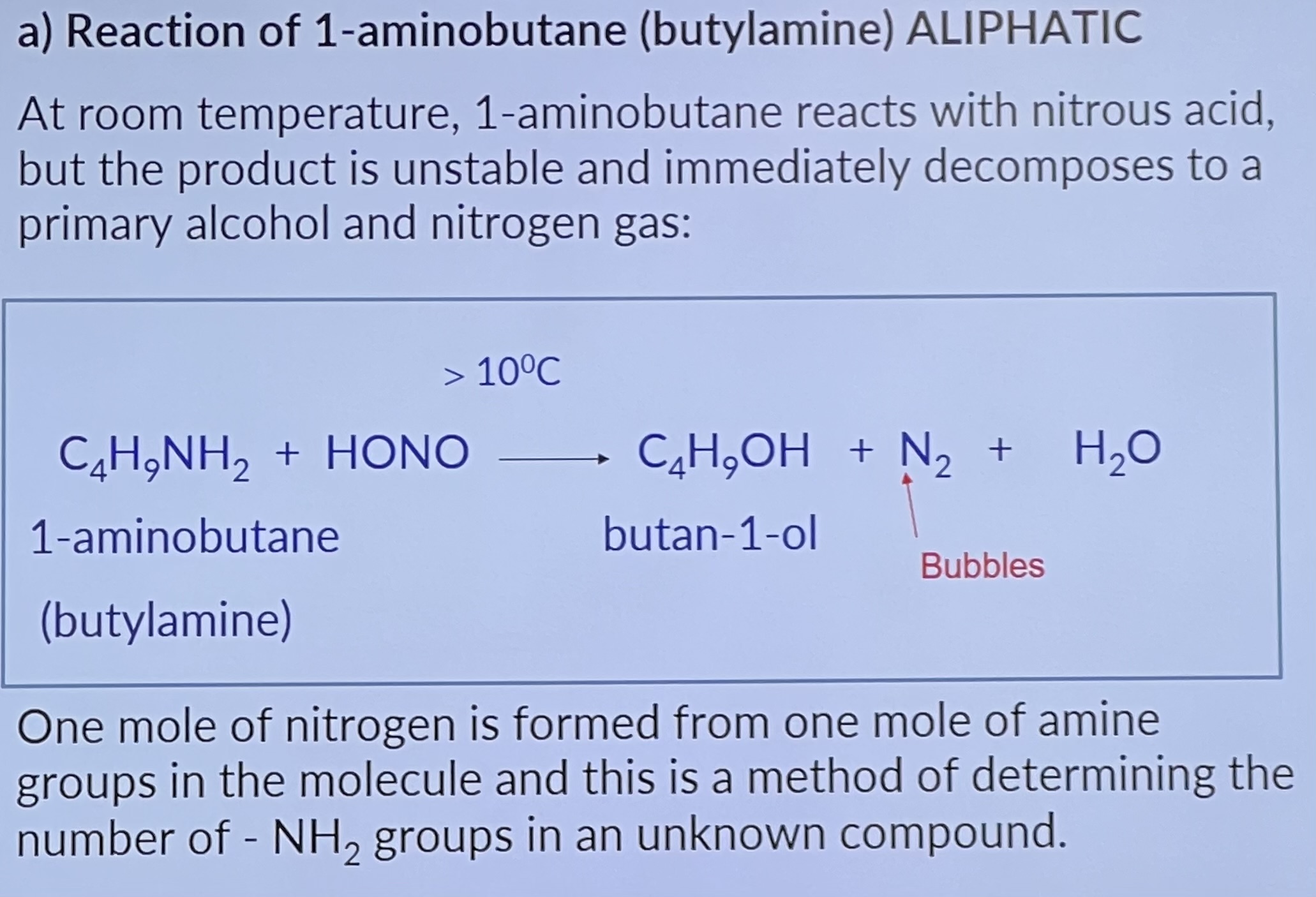
Reaction of aminobenzene - Aromatic
Aliphatic amines do form diazonium salts under the same conditions but they are unstable and decompose rapidly.
The diazonium ion is positively charged and has weak electrophilic properties. In the presence of OH ions it reacts with activated aromatic rings e.g. phenol, 2-naphthol, to form other organic compounds by means of coupling reactions.
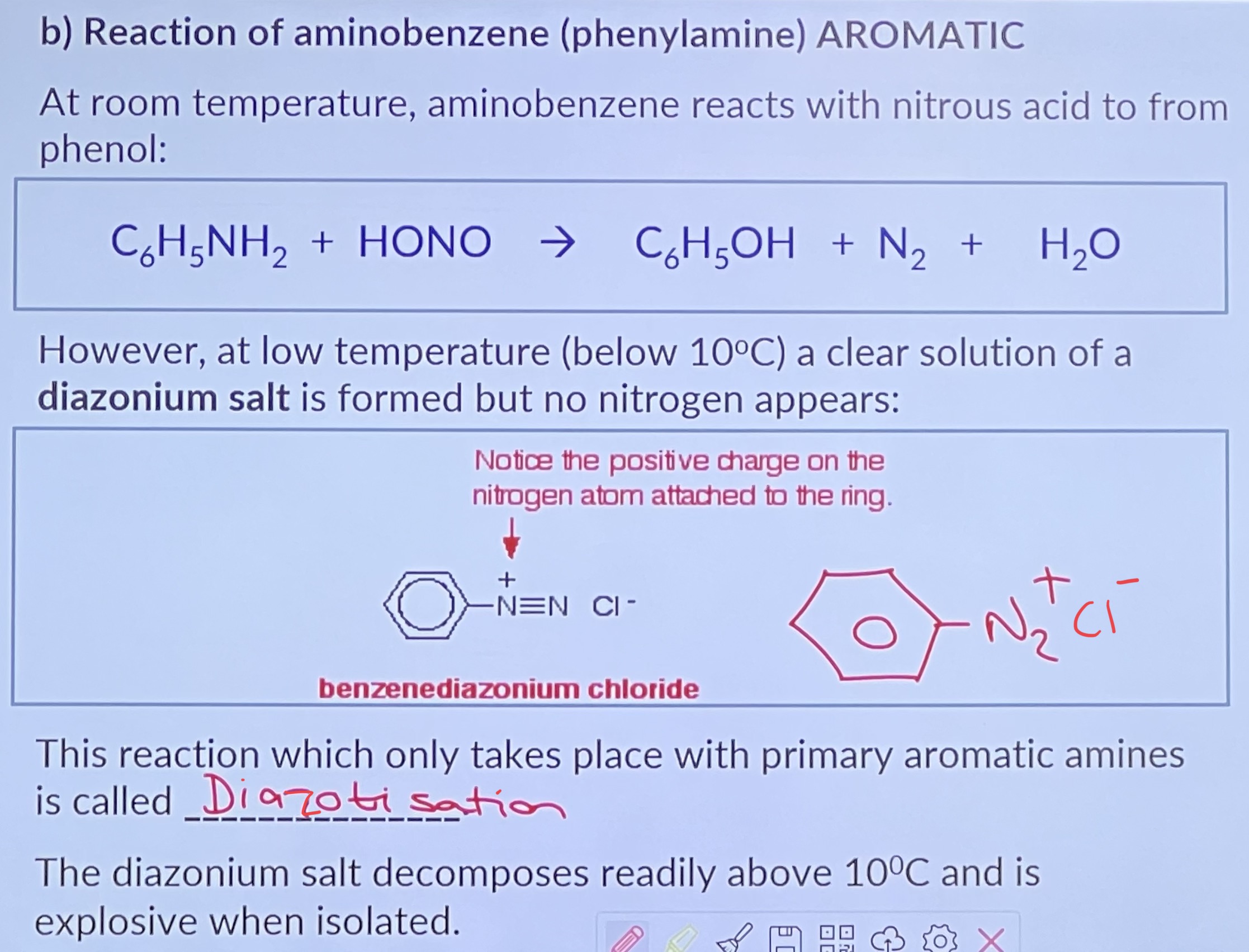
Coupling reactions of diazonium salts
Amine is the starting compound

Azo Dyes Questions

Reaction Summary Sheet
